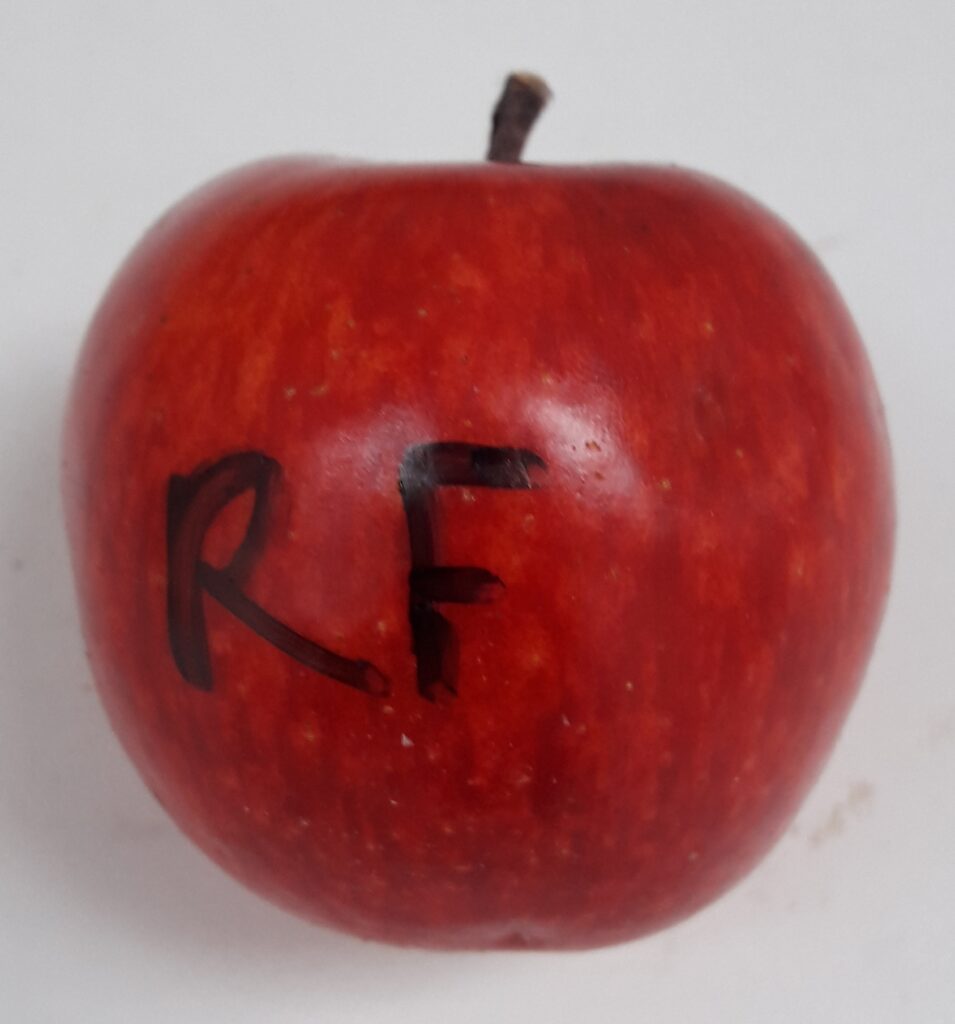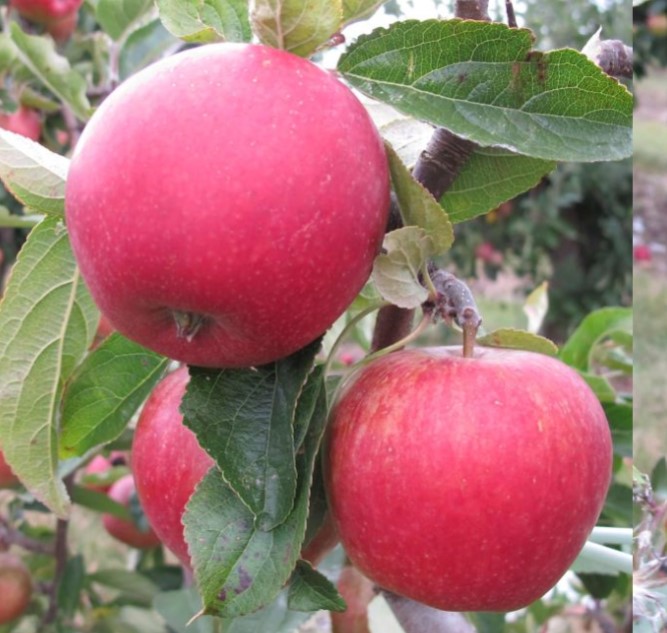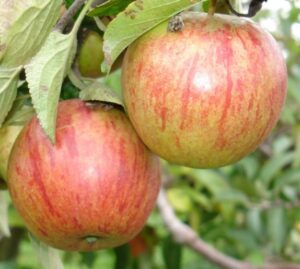
Share this article
[photo shows Red Falstaff]
Maybe like me, you still have images from the Olympics running round in your head, and, like me, you are now imagining weightlifting with giant apples instead of dumbbells; shooting at apples perched on the heads of Parisien volunteers; and track relays handing over apples rather than batons. Applebobbing, of course. Plus appleputting and competitive pruning.
And in this quiet way, the Apple Olympics is born.
Back on the smallholding, apple sports have always fascinated me.
A sport or bud sport, or lusus, is the part of a plant which differs genetically and may have different coloured or structured foliage or fruit or flowers. Lusus naturae means a sport or freak of nature, and if you like these things (and I do) a short story by Margaret Atwood.
An example of a sport apple is Red Falstaff. The parent tree, Falstaff, is a cross between James Grieve and Golden Delicious, raised in Kent in 1986. Red Falstaff, a redder variant, appeared on a tree, and was propagated independently (by the normal process of whip and tongue grafting). It’s a delicious apple, and one I grow.
Another example is Red Ellison which is a red-flushed sport of Ellison’s Orange. The parent tree was raised by Reverend Ellison in Lincolnshire in 1904. Red Ellison was discovered in Cambridgeshire in 1948.
In fact, ‘most sports,’ says David Bedford, senior fellow at the University of Minnesota Horticultural Centre, ‘are mutations that are redder than the original.’
Bud sports can take place in other fruits, too. The nectarine is a sport of the peach. And less surprisingly, now you’re in the know, the Ruby Red grapefruit is a sport of the grapefruit.
In the United States, where commercial apple farming is far more extensive than in the UK, bud sports are seen as an opportunity rather than a pomological quirk. In fact, there are dozens of sports of Honeycrisp, Red Delicious, McIntosh and Gala.
The redder and the earlier they ripen are the two characteristics growers are looking for, because they determine the price.
However, adopting sports is a strategy is not without its pitfalls – early colouring is different from early maturing, and if bud sports are selected only because of the former, the taste can suffer, and ultimately their popularity (and price).
An additional problem in the U.S. is ‘sport inflation’ – this is the race to find new sports when a new variety becomes successful. Unlike most countries (including, I think, the UK), in the U.S. the finder of the sport becomes the owner, and enjoys the years of (costly) development for nothing.


[photos above are Red Ellison and Ellison's Orange]
The cause of a sport is thought to be a chance genetic mutation, but according to the RHS, can be triggered by cold weather, temperature fluctuations, or insect damage.
Reversion is possible – this is when the cultivar reverts back to its former structure, and is particularly common amongst variegated plants. In fact, I have an example in my own garden. My variegated daubenton kale has a branch of leaves which are not variegated.
Thousands of genes make one variety of apples, or pears, or any fruit, different to another. ‘In wine grapes, a one-gene mutation makes the difference between Pinot Noir and Pinot Grigio,’ says Dr Beaudry, a fruit tree physiologist at Michigan State University. Determining the specific gene(s) in a bud sport which is different to the original has not (as far as I can ascertain) been achieved, but is likely to be achieved in the not so distant future.
If specific genes can be isolated, then growers will be able to determine the exact characteristics of apples they want.
But where’s the fun (and wonder) in that?
More fun in this . . . still awash with swim / run / bike / paddle / throw, I’m conjuring up the whip and tongue grafting marathon, the longest slice of apple peel, synchronised pruning . . .
Refs
The Book of Apples, Joan Morgan and Alison Richards
The Good Fruit Grower, ‘A managed variety program can avert sport inflation,’ 15 March 2008
The Good Fruit Grower, ‘Looking for good sports’, 23 October, 2015
The Good Fruit Grower, ‘Honeycrisp sports race towards red’, 27 June, 2017
The Good Fruit Grower, ‘Studying how to be a good sport’, 11 October, 2022
The Good Fruit Grower, ‘Honeycrisp is the new honeycrisp’, 13 October, 2022